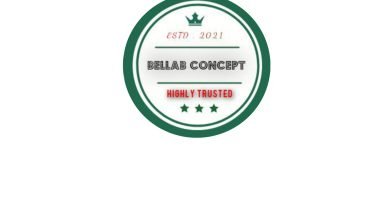ACCEPTING NEW CLIENTS
Are you interested knowing more about accepting new clients? If so, then you are on the right page. Feel relaxed and make sure you read the article to the end.

Having a policy for client acceptance can help accountants reduce the risk of possible financial ruin. CPAs should avoid clients who can damage their professional reputation and should only seek those who can add to the profit and prestige of accountants’ practice. Several executives of accounting firms recommend that the decision to choose which clients to accept should be based on five factors. These are the willingness of prospective client’s management to share relevant information, the kind of relationships the client has with other professionals, the effects of being associated with the client may have on the accountant’s reputation and profitability, the ability of the CPAs to provide the services required of them, and the ability of the client to pay for the CPAs’ services. A guide to preparing a client acceptance checklist is presented.
Accepting a new client can be an exciting time. But going into a new client relationship without first doing the proper preparation could be disastrous. You run the risk of making your new client unhappy and ultimately getting a bad reputation. To ensure your new client relationship is a success, you are going to have to do a bit of legwork first.
ACCEPTING NEW CLIENTS
What you need to know before accepting a new client
- Research
The first thing you need to know is the basic information about your prospective client. Being knowledgeable about who they are and what they do will help you to understand their value as a client, and to build a successful business relationship.
In your research, you need to establish exactly what the client’s business is. Find out the services they offer and the scale of their operation. It is also important to research whether they’ve worked with a business like yours before. If so, why are they now making the switch to you?
This research will help you to better communicate with the prospective client. Doing your research will make discussions more efficient and show you are invested, creating a good first impression.
- Client Expectations
The next thing you need to know before accepting a new client is exactly what their expectations are. What do they want out of this business relationship?
Although you may already have some idea about their expectations from your research or experience in the field, it is important to not just assume what they will be. This could lead to misunderstandings that could result in dissatisfied clients. Instead, let the prospective client tell you what their expectations are. Ask questions and listen carefully to their answers.
Expectations around budget, timeframe, the scale of services and the desired results should all be pinned down. This will be essential for understanding what accepting this new client will involve.
- What You Can Offer
Now that you understand the expectations of your prospective client, you need to ask yourself if you will be able to meet them. Think about what you have provided for clients in the past and whether this new client will be similar. You could use your previous work as an example for this client, so they can get some idea of what to expect and feel confident that you can deliver.
If the client’s expectations are different, then you need to make sure that you are able and willing to offer what they are asking for. Think about the resources it would take and if it is actually feasible. If something needs to be changed in order for you to deliver the best service, such as budget adjustments, then clearly and calmly explain this to the client now. Compromises are often necessary.
Remember, promising something that you will ultimately be unable to deliver will result in unhappy customers and could lead to a whole host of bigger issues. You must establish whether you can provide what the client is asking for.
ACCEPTING NEW CLIENTS
It’s an uncommon for a CPA to have one of those clients. Maybe there were warning signs from the beginning, but somehow, they seemed to fall below the radar. Now, you find yourself serving a client who complains about their bill, has asked you to do something unethical, is always late with their information, or is increasingly rude. Situations like these are unpleasant and can absolutely be avoided. In this post, you’ll learn 4 steps to developing a client acceptance policy, the characteristics to weigh when accepting clients, and important best practices for implementation.
-
Contents
Identify Your Ideal Client
The first step for creating a client acceptance policy is understanding the types of clients you’d like to have. There isn’t necessarily one ideal client. Study your service lines and industry areas and create a set of criteria for each. Consider the following:
- Annual revenue – for certain service lines and industry groups, annual revenue may be a factor in accepting a client due to internal resources or level of services required.
- Potential services – your ideal client should utilize multiple services within your firm. Analyze the opportunity for expansion of services for each client.
- Relationships – examine the relationships your potential client has with existing clients (family, friends, business associates), and referral sources (bankers and attorneys).
- Risk level – what level of risk is the firm willing to accept? This can include risk associated with the prospects financial situation and their reputation.
- Fees – start by outlining your fee structure. Does your firm set minimums for services, and if so, does the prospect meet those and are they willing to pay the appropriate fees assigned to the engagement?
- Mindset – firms want to work with clients that value their services. The way a client treats your firm, their positive disposition and/or willingness to listen are often important factors in accepting new clients.
- Other – other unique criteria may prove valuable to your firm. For example, business profitability or number of years in business (not a start-up). Determine your set of criteria and articulate them as best as possible.
-
Create a Client Acceptance Matrix
Once you’ve established a clear outline of your ideal client(s), you can use it as a guide in developing your client acceptance matrix. Outline ideal characteristics within the matrix and rate each prospect accordingly. Examples of characteristics may include:
- After reviewing the client materials, there is no evidence to show the prospect would be a high risk for the firm.
- We are appropriately staffed to meet the needs of the prospect or can become staffed through temporary or permanent hires.
- The proposed fees meet our established minimums, are adequate to achieve our desired realization, and meet the client’s needs.
-
Designate who will be Involved in the Process
When working with firms on their client acceptance process, we find that creating a committee to approve clients can be helpful to ensure the appropriate parties are involved. The committee may include partners, managers, and firm administrators who can act as gatekeepers for the firm by ensuring criteria has been met before accepting a client.
READ ALSO:WHAT GAS STATION ACCEPT VENMO
-
Promote and Educate the Policy Internally
Internal communication is a crucial step to the success of a client acceptance policy. Members of your firm need to understand the desired characteristics of your ideal client before creating their business development strategies.
- Share your ideal client model and encourage activities that support those areas.
- Outline the steps required when submitting a prospect for acceptance
- Establish a schedule for committee meetings and expected turnaround time.
Achieving strategic growth begins with a blueprint of your firm’s ideal clients. Turning away those who don’t meet your criteria is hard to do. We promise this process will make for happier employees with higher realization (because they will be working with clients they enjoy!). Contact us for help in establishing a client acceptance policy for your firm.



